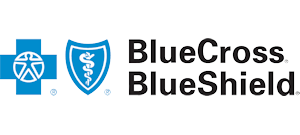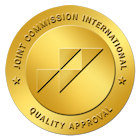Crack and meth are both highly addictive drugs, but they are not the same. Crack, a form of cocaine, is a stimulant derived from coca plants, while meth, short for methamphetamine, is a man-made stimulant made from synthetic chemicals. Both drugs affect the brain’s reward system, causing intense highs and severe dependency, but their chemical makeup, effects, and risks differ. For example, crack typically produces a short, intense high, while meth’s effects last longer but can lead to more severe physical and psychological damage over time.
At Crestview Recovery, we provide comprehensive treatment programs to help people overcome the unique challenges of crack and meth addiction. Through personalized care plans, therapy, and a supportive environment, we empower clients to rebuild their lives and achieve long-term recovery. If you or a loved one is struggling with crack or meth addiction, we’re here to help every step of the way.
What is Crack Cocaine?
Crack cocaine, often just called crack, is a powerful stimulant made by processing powdered cocaine with substances like baking soda and water. This process turns it into a solid, crystal-like form that’s smoked for a fast and intense high. The high from crack is short-lived, typically lasting around 5 to 10 minutes, but it’s incredibly potent and addictive.
Crack is a freebase form of cocaine, meaning it’s altered to remove impurities, making it smokable. The result is a drug that enters the bloodstream rapidly, intensifying its effects on the brain’s reward system.
Crack is most commonly smoked using a pipe, allowing it to reach the brain quickly. The immediate effects include intense euphoria, heightened energy, and alertness. However, this is followed by a rapid comedown, which can cause anxiety, irritability, and cravings, making it highly addictive.
What is Methamphetamine?

Methamphetamine, or meth, is a synthetic stimulant drug that affects the central nervous system. It’s known for its powerful and long-lasting effects, which can keep people awake and energized for hours or even days. Meth is extremely addictive and causes significant harm to both the body and mind over time.
Meth is a man-made drug typically created using chemicals like pseudoephedrine (found in cold medications) and other toxic substances such as ammonia or lithium. Its synthetic nature makes it highly potent and dangerous.
Meth can be smoked, snorted, injected, or ingested in pill form. Smoking and injecting produce the fastest and most intense high. The immediate effects include an intense rush of euphoria, increased focus, and energy. However, these are followed by severe side effects, such as paranoia, aggression, and the potential for addiction after just a few uses.
Understanding the differences between crack and meth is vital for recognizing their dangers and seeking help when needed. Both drugs have devastating effects, but recovery is possible with the right treatment and support.
Key Differences Between Crack and Meth
Crack cocaine and methamphetamine (meth) are both powerful and addictive stimulants, but they differ in their chemical composition, how they affect the body and brain, and the methods used to consume them. Understanding these differences can help highlight their unique dangers and the need for specialized treatment when addiction occurs.
- Crack Cocaine: Crack rapidly stimulates the brain’s reward system, creating a short-lived euphoric rush. It can cause increased heart rate, high blood pressure, and feelings of paranoia or anxiety. Prolonged use damages the heart and lungs and leads to intense cravings.
- Methamphetamine: Meth provides a longer-lasting high that overstimulates the brain, leading to increased focus, energy, and euphoria. However, it also causes severe side effects, such as aggression, psychosis, and permanent damage to the brain, teeth, and skin (known as “meth mouth”).
- Crack Cocaine: The high from crack is intense but short, typically lasting only 5–10 minutes. The rapid comedown leads to repeated use, increasing addiction risk.
- Methamphetamine: Meth’s high can last several hours, making it seem more appealing, but its prolonged effects often lead to severe physical and psychological tolls.
- Crack Cocaine: Crack is most commonly smoked using a pipe, allowing it to enter the bloodstream quickly. Some people also inject it, but this method is less common.
- Methamphetamine: Meth can be smoked, snorted, injected, or taken as pills. Smoking and injecting meth create the most intense high, while snorting and ingesting produce slower effects.
Similarities Between Crack and Meth
 Crack cocaine and methamphetamine (meth) may have differences in their composition and effects, but they share significant similarities in the damage they cause. Both are powerful stimulants with a high potential for addiction, devastating long-term health impacts, and serious effects on mental well-being.
Crack cocaine and methamphetamine (meth) may have differences in their composition and effects, but they share significant similarities in the damage they cause. Both are powerful stimulants with a high potential for addiction, devastating long-term health impacts, and serious effects on mental well-being.
Both crack and meth are highly addictive because of how they affect the brain’s reward system. They flood the brain with dopamine, creating intense feelings of pleasure. However, this also rewires the brain, making people crave the drug to feel normal. This cycle of addiction can develop quickly, even after just a few uses, leading to dependency.
The long-term health risks of crack and meth are severe. Crack can cause lung damage, cardiovascular problems, and an increased risk of strokes. Meth users often suffer from “meth mouth” (severe dental decay), skin sores, and damage to internal organs like the heart and liver. Both drugs weaken the immune system and lead to premature aging and physical deterioration.
Both drugs have profound effects on mental health. Crack use can lead to anxiety, paranoia, and hallucinations, while meth is notorious for causing psychosis, including delusions and violent behavior. Over time, these substances can cause long-lasting mental health issues, such as depression and cognitive impairments, even after stopping use.
Signs of Addiction to Crack vs. Meth
Recognizing the signs of addiction is a critical step toward helping someone get the care they need. While crack and meth are both highly addictive stimulants, the physical and behavioral signs of addiction can vary between the two. Here’s what to watch for.
Signs of Crack Addiction in Behavior and Physical Health
- Frequent Short Highs and Cravings: Crack produces a quick, intense high that lasts only a few minutes, leading to repeated use and cravings.
- Weight Loss and Poor Appetite: Many people addicted to crack lose weight rapidly due to appetite suppression.
- Burn Marks or Sores: Smoking crack can cause burns around the lips or fingers, sometimes called “crack lips.”
- Erratic Behavior: People addicted to crack may become highly agitated, paranoid, or experience sudden mood swings.
- Financial Problems: The short-lived high often leads to frequent use, which can quickly drain finances.
Physical and Behavioral Signs of Meth Addiction
- Extreme Energy or Agitation: Meth often causes people to feel hyperactive or unusually energized for extended periods.
- Dental Problems (“Meth Mouth”): Severe tooth decay and gum disease are common in meth addiction due to dry mouth and poor hygiene.
- Skin Sores: Picking at the skin is a common behavior, leading to sores and scars.
- Paranoia and Hallucinations: Meth can cause people to experience delusions, paranoia, or see things that aren’t real.
- Extended Periods Without Sleep: Meth addiction often leads to sleeplessness for several days at a time, followed by severe fatigue.
How Crestview Recovery Treats Crack and Meth Addiction
While both drugs are highly addictive and dangerous, their unique characteristics mean they require different approaches to treatment and recovery. At Crestview Recovery in Portland, we understand the unique challenges of overcoming crack and meth addiction. Seeking professional help is crucial for long-term recovery, as these stimulants have intense physical, mental, and emotional effects that require comprehensive care. Here’s how we help our clients reclaim their lives:
We offer flexible treatment options, including residential programs for those who need intensive, immersive care and outpatient programs for people balancing recovery with daily responsibilities. Both options include personalized care plans to address the specific needs of each person, ensuring they have the tools and resources to succeed.
Addiction often coexists with mental health challenges like anxiety, depression, or trauma. Our dual diagnosis approach treats both addiction and underlying mental health conditions, helping clients heal on all levels. We also use evidence-based therapies, such as Cognitive Behavioral Therapy (CBT), to help clients develop healthier coping mechanisms and rebuild their lives.
At Crestview Recovery, we specialize in recognizing the unique challenges of crack and meth addiction. Our compassionate team provides evidence-based treatments tailored to each person’s needs, addressing both the physical and emotional aspects of addiction. If you or a loved one shows signs of addiction, don’t wait—contact us today to begin the journey toward healing and recovery. Take the first step today toward a healthier life free from drugs.
































